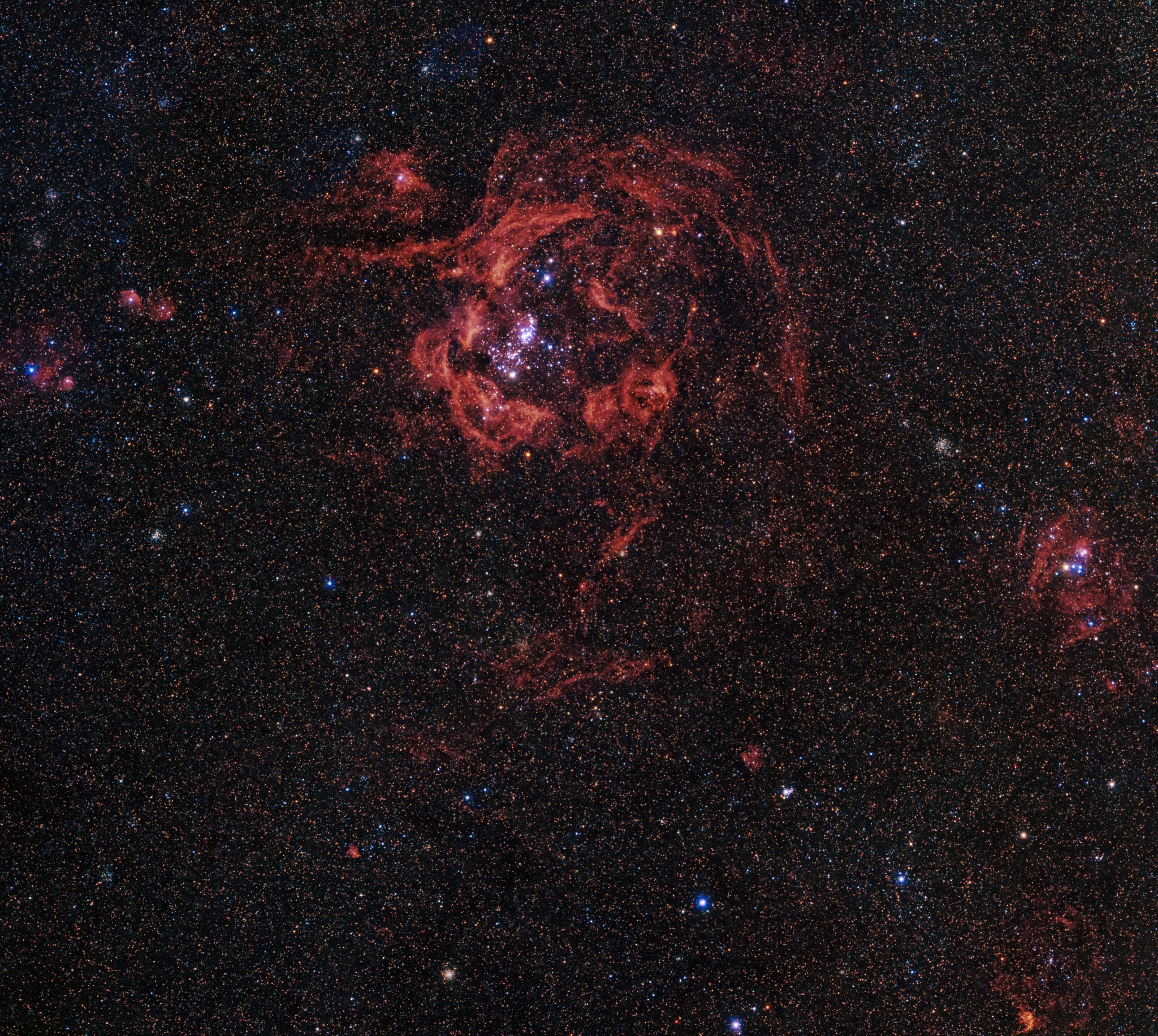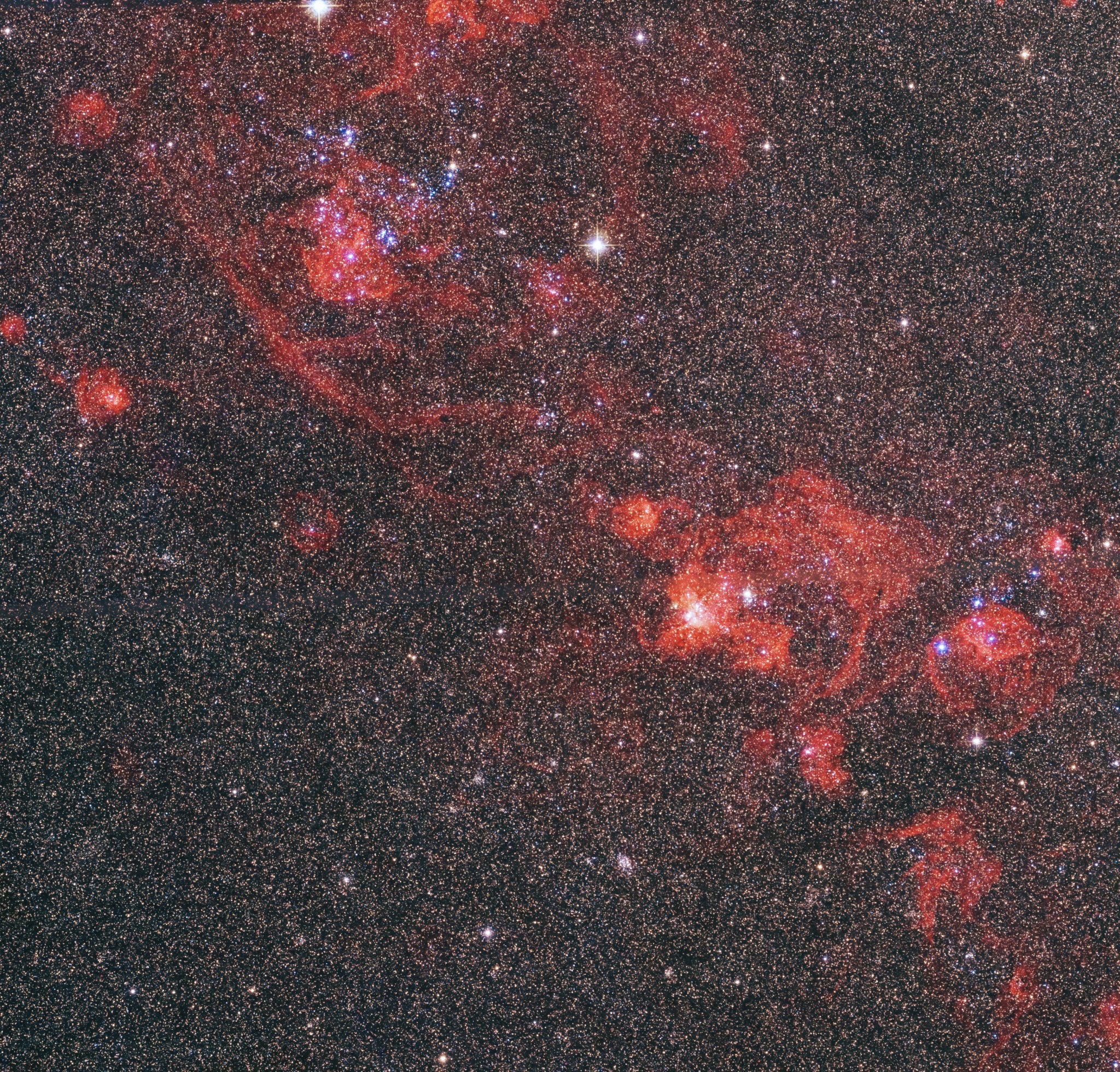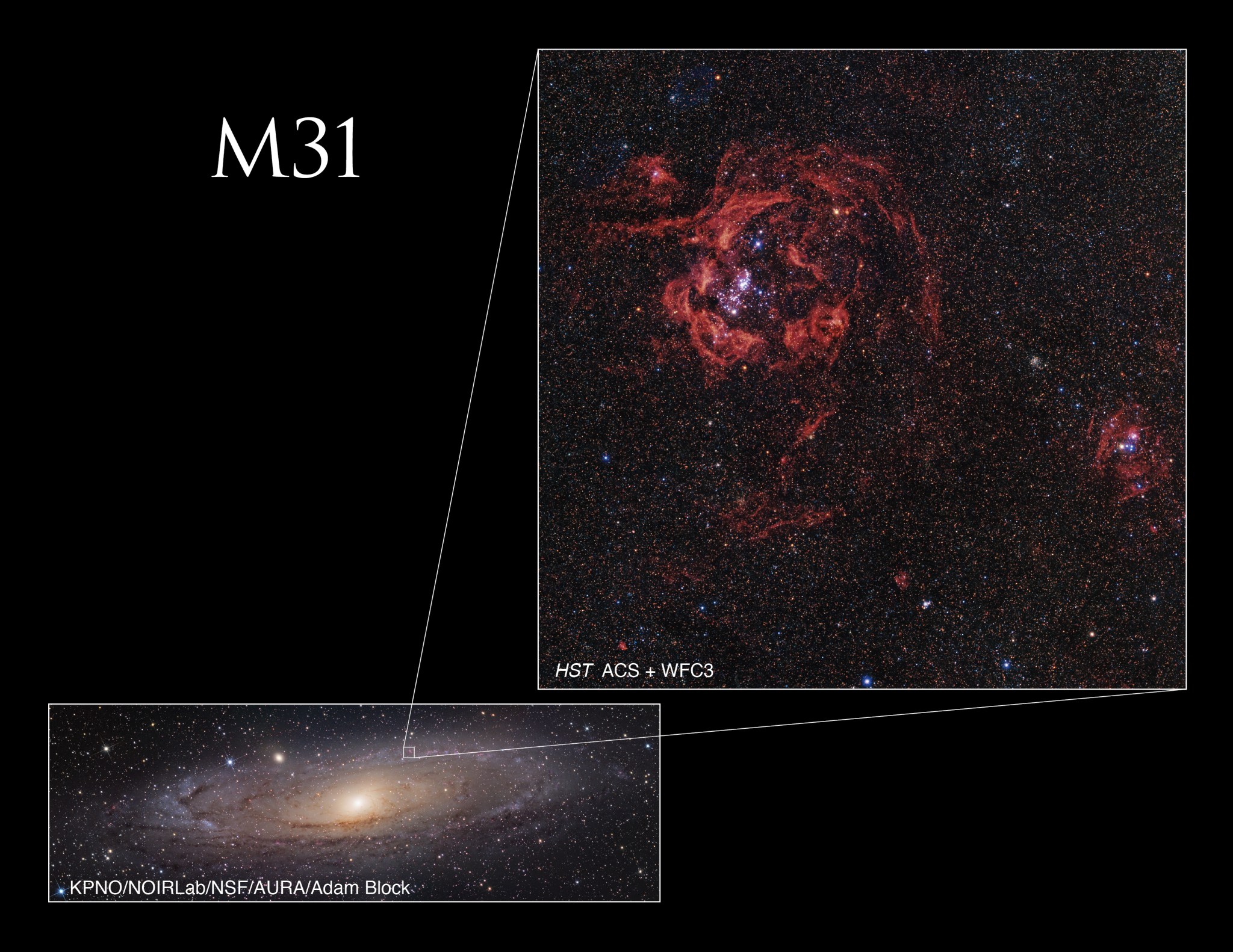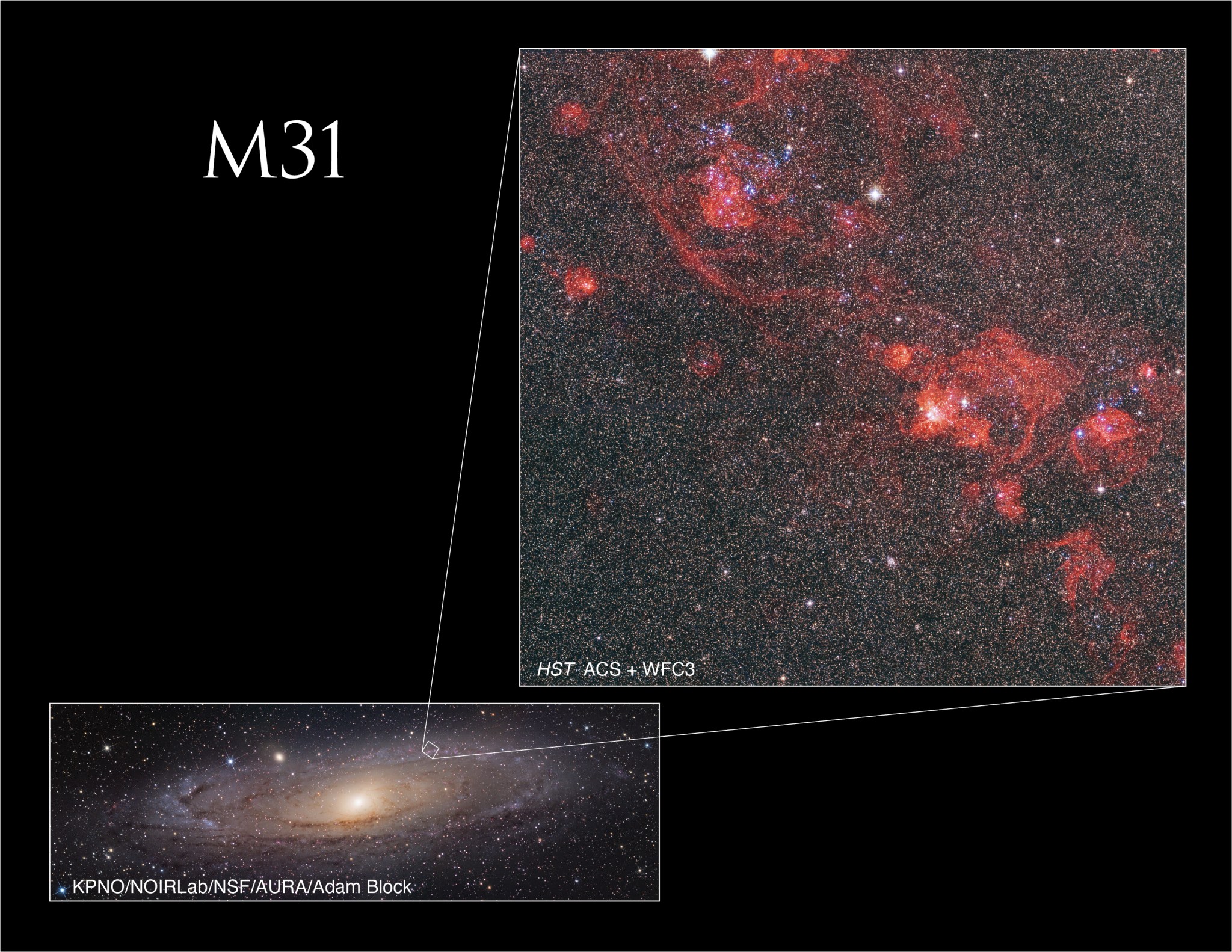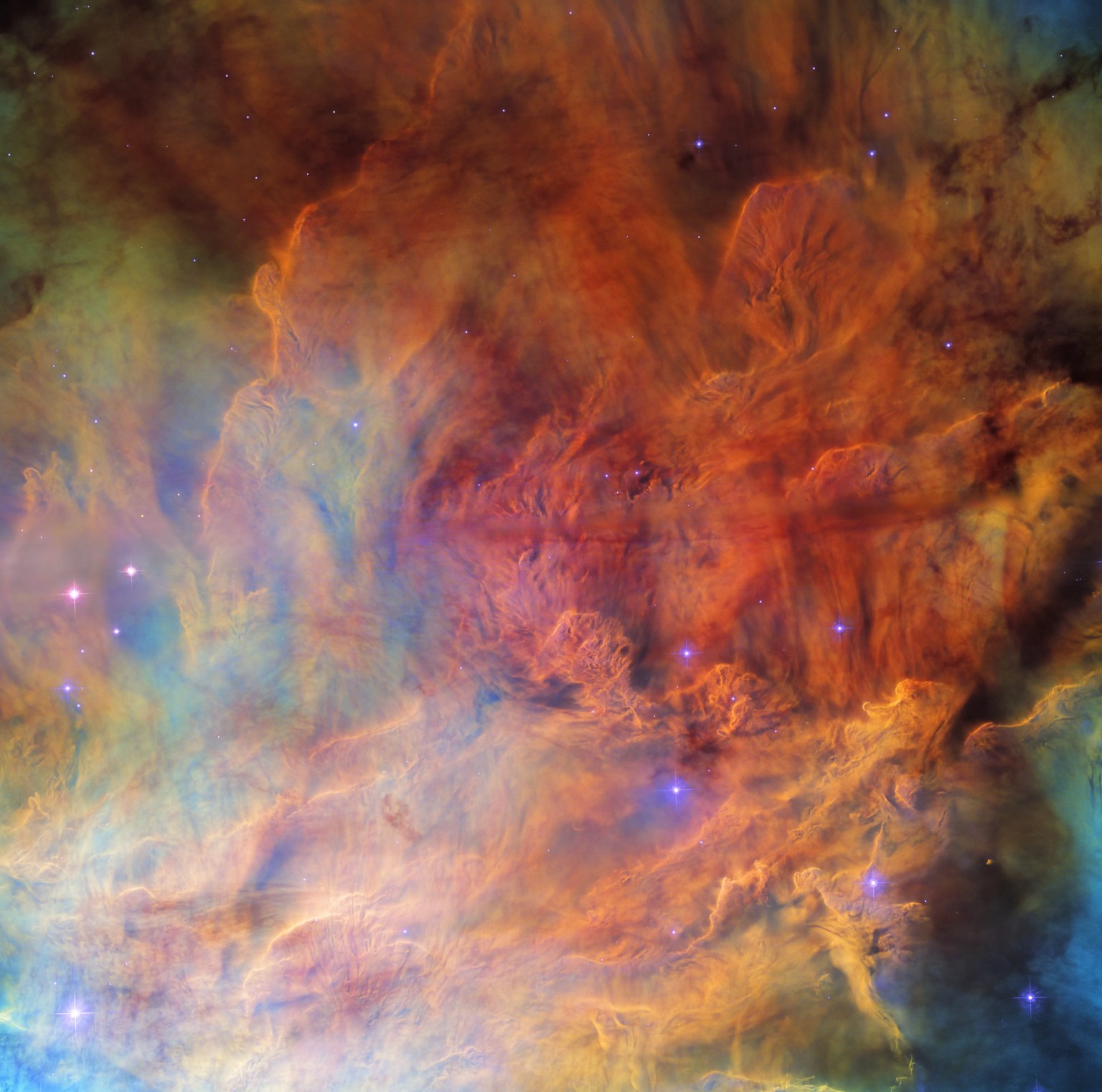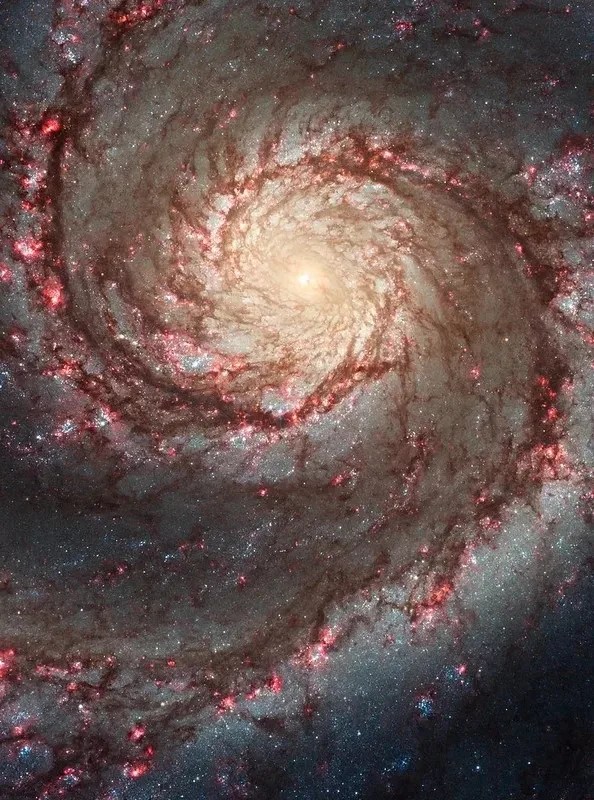Clusters of stars set the interstellar medium ablaze in the Andromeda Galaxy about 2.5 million light-years away. Also known as M31, Andromeda is the Milky Way’s closest major galaxy. It measures approximately 152,000 light-years across and, with almost the same mass as our home galaxy, is headed for a collision with the Milky Way in 2-4 billion years. In the meantime, Andromeda remains an object of study for many astronomers.
As a spiral galaxy, Andromeda’s winding arms are one of its most remarkable features. NASA’s Hubble Space Telescope zoomed in to get a close look at one of its tendrils in the northeast, revealing swathes of ionized gas. These regions — which are common in spiral and irregular galaxies — often indicate the presence of recent star formation. The combination of stellar nurseries and supernovae create a dynamic environment that excites the surrounding hydrogen gas, flourishing it into a garden of star-studded roses.
Scientists probed Andromeda’s spiral arms using Hubble’s Advanced Camera for Surveys (ACS) and Wide Field Camera 3 (WFC3) to analyze the collection of stars buried in its cosmic bouquets. With ACS and WFC3’s wide spectral coverage, Hubble could peer through the hedges of gas and observe a valuable sample of these stars. The extent of the study spanned a vast range of stars, providing not just a clear view of Andromeda’s stellar history and diversity, but also more insight on stellar formation and evolution overall. By examining these stars in our local cosmic neighborhood, scientists can better understand those within galaxies in the distant universe.
Explore More
Media Contact:
Claire Andreoli
NASA's Goddard Space Flight Center, Greenbelt, MD
claire.andreoli@nasa.gov























